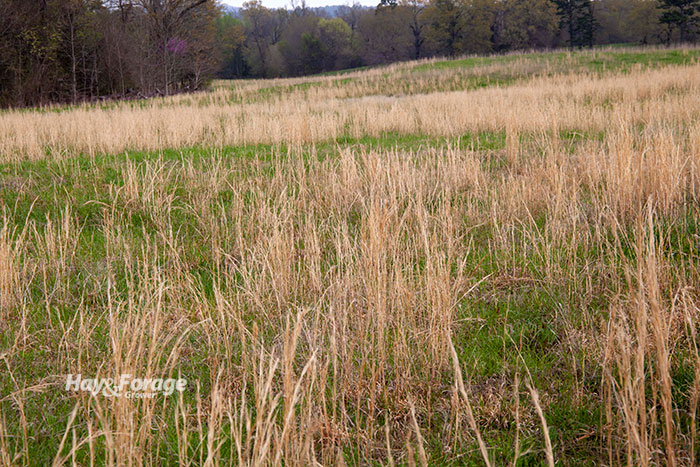Broomsedge is talking: Are you listening? |
| By Mike Rankin, Managing Editor |
|
|
 Among humans, most communication is accomplished by speaking or writing. However, there’s a whole world of science that studies what is called nonverbal communication. This is communication we convey simply by making certain body movements — a raised eyebrow, a slouched posture, a hand gesture, or a purposeful facial expression. Unlike humans, plants have no choice but to speak to us using nonverbal communication. They wilt, turn various colors, contort with abnormal growth, or grow by leaps and bounds. As a farmer, analyzing our crops to see what they are telling us is an inherent and necessary activity. There are some plants that speak to us simply by being present. Broomsedge is one of them. It’s rare that you find broomsedge, a warm-season perennial grass, in a pasture or hayfield that has been well-managed for multiple years. It generally only grows where the population of desirable forage plants is low, or the preferred forage crop is unthrifty because of low soil fertility. In other words, broomsedge exploits the misfortune of other species. This topic wouldn’t be worth writing about if the broomsedge problem was uncommon, but it’s not. Broomsedge is relatively easy to spot where it is adapted. In late summer and fall, its tall, tan stalks stick out like a guy wearing a sport coat and tie at a forage field day. The situation might not be so bad if broomsedge offered some feeding value, but it doesn’t. The plant is mostly stalk and fluffy seedhead. No selective herbicide will take it out and leave only desirable cool-season grasses. To eliminate broomsedge is to simply identify the problem that caused its presence in the first place. Below is a list of practices that, if followed, will have your pastures and hayfields broomsedge-free, or at least nearly so. Get soil fertility into an optimum range. Often, the reason for a broomsedge infestation is a lack of soil fertility, especially in hayfields. It may be a low soil pH, or more often deficient levels of available phosphorus and/or potassium. There have been many examples of near broomsedge elimination simply by getting soil fertility up to speed. If adding commercial fertilizer or manure/litter isn’t feasible from an economic standpoint, strategically feed hay on broomsedge-infested pastures. The combination of hay waste, manure, and urine deposition will improve soil fertility, but it will take a few to many years. Strategic winter bale grazing or rolling bales out on winter pastures will also help rectify soil fertility issues. Adjust your grazing strategy. Implement some form of rotational grazing that will favor desirable species and evenly spread manure and urine. Giving cool-season grasses adequate rest intervals will help plants outcompete the broomsedge, especially in the fall. Broomsedge seedlings are not very competitive. Again, anything that can be done to encourage the growth of desirable species will inhibit the presence of broomsedge. Clip pastures. Clipping pastures will both weaken broomsedge plants and open the canopy for more desirable forage growth. It’s generally recommended to clip pastures when the brown broomsedge seedheads first appear and then again in the early fall to help weaken the plants going into winter. Clipping won’t eliminate broomsedge immediately, but over time there will be a reduction in the number of plants. Apply nitrogen. Use nitrogen fertilizer to encourage the growth of the cool-season grasses such as tall fescue. This can be done after the first clipping in late summer to encourage fall grass growth. Interseed more grasses. If the problem is a thin stand of grass, but soil fertility is still adequate, interseeding grasses to thicken the stand will be beneficial. Remember, this is a war of competition. Start over. If stands are extremely thin, it may be best to simply spray the entire pasture or hayfield with a nonselective herbicide and reestablish the field. Again, make sure soil fertility is at optimum levels before reseeding or the same broomsedge problem will persist. Wherever broomsedge exists, it’s telling you there’s a problem. Fix the problem(s) and the broomsedge will disappear. This has been shown to be true in many production and research fields over the years. Broomsedge talks with nonverbal communication; we just have to listen. |
